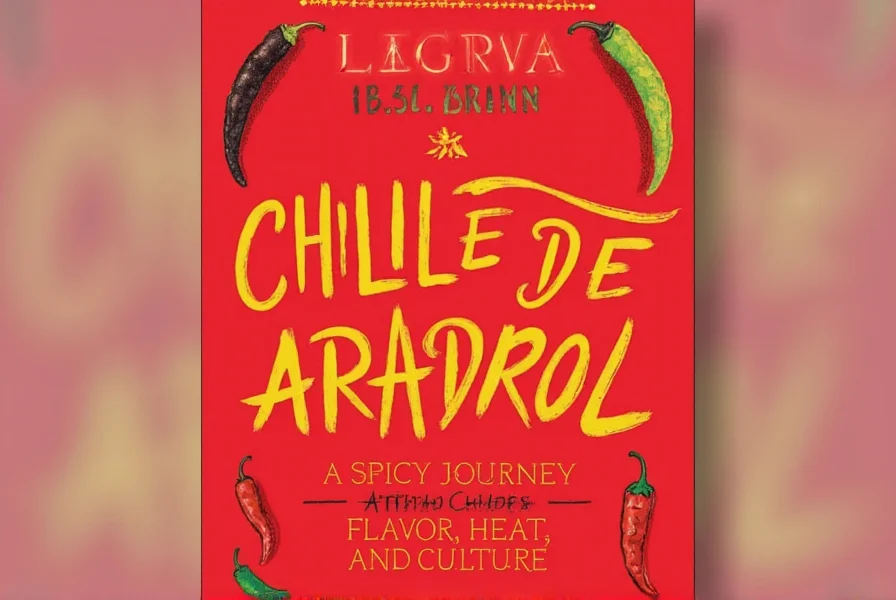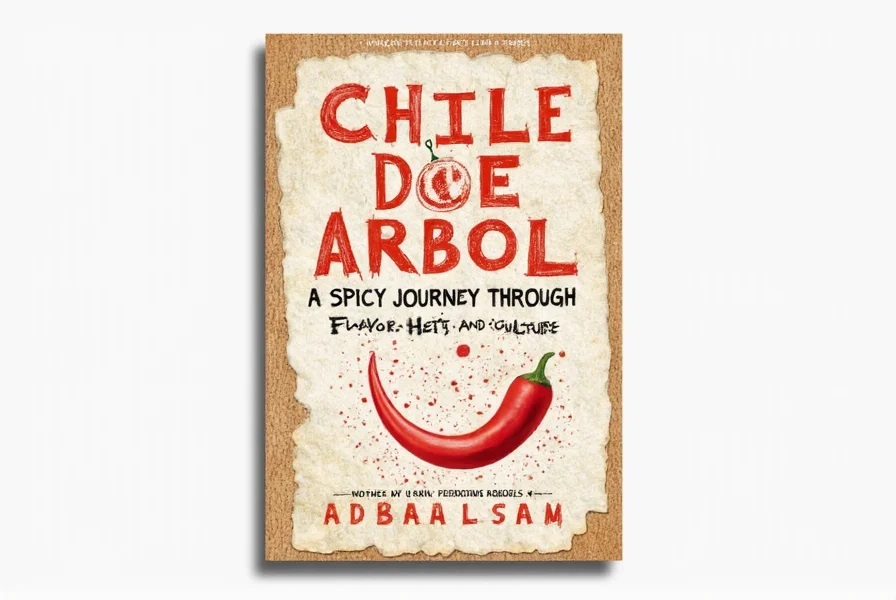Chile de Arbol: A Spicy Journey Through Flavor, Heat, and Culture
Table of Contents
Introduction to Chile de Arbol
If you're a spice enthusiast or someone who loves adding a kick to your food, you've probably heard of chile de arbol. But what exactly is it? Let's dive into the world of this fiery little pepper that packs a punch both in flavor and heat.
Chile de arbol, which translates to "tree chili" in Spanish, is a type of small, thin chili pepper that is commonly used in Mexican cuisine. It's known for its vibrant red color, slightly wrinkled texture, and its intense heat. The name comes from the fact that the pepper grows on a tree-like plant rather than a bush, which is different from many other chili varieties.

But beyond its appearance, chile de arbol has a rich history and cultural significance. It has been used for centuries in traditional Mexican cooking, and today, it's gaining popularity worldwide due to its unique flavor profile and versatility.
Spice Profile and Heat Level
The chile de arbol is one of the hotter peppers in the chili family, but it's not the hottest by any means. Its heat level typically ranges between 15,000 to 30,000 Scoville Heat Units (SHU), placing it in the moderate to hot range. For comparison, jalapeños are around 2,500 to 8,000 SHU, while habaneros can reach up to 100,000 SHU.
What makes chile de arbol stand out is its combination of heat and flavor. Unlike some peppers that are purely spicy, chile de arbol offers a smoky, earthy, and slightly sweet taste with a lingering heat. This balance makes it a favorite among chefs and home cooks alike.
To give you a better idea, here's a quick comparison of common chili peppers:
| Pepper | Heat Range (SHU) | Flavor Profile |
|---|---|---|
| Chile de Arbol | 15,000 - 30,000 | Smoky, Earthy, Slightly Sweet |
| Jalapeño | 2,500 - 8,000 | Mild, Grassiness, Slight Heat |
| Habanero | 100,000 - 350,000 | Very Hot, Fruity, Citrusy |
| Ghost Pepper | 850,000 - 1,040,000 | Extremely Hot, Smoky, Bitter |
As you can see, chile de arbol sits comfortably in the middle—hot enough to add real heat, but not so overwhelming that it drowns out the other flavors in your dish.
Culinary Uses and Popular Dishes
Chile de arbol is a staple in many Latin American cuisines, especially in Mexico. It's often used in salsas, moles, and sauces, where its heat and flavor can shine through. Here are some popular dishes that feature chile de arbol:
- Salsa Roja: A classic red sauce made with tomatoes, garlic, onions, and chile de arbol. It’s perfect for dipping tortilla chips or drizzling over tacos.
- Mole Poblano: A rich, complex sauce made with chocolate, spices, and chile de arbol. It's a key ingredient in the famous mole poblano, which is often served with chicken or pork.
- Chiles Rellenos: Stuffed peppers filled with cheese, meat, or vegetables, then fried. Chile de arbol adds a nice kick to the filling and the sauce.
- Pozole: A traditional soup made with pork, hominy, and chile de arbol. It's a hearty meal that warms you up on a cold day.
One of the most interesting things about chile de arbol is how versatile it is. You can use it fresh, dried, or even as a powder. Each form brings out a slightly different flavor and heat profile. Fresh chile de arbol is more vibrant and juicy, while dried chile de arbol has a more concentrated, smoky flavor.
Buying Guide for Chile de Arbol
If you're looking to try chile de arbol, there are several ways to buy it depending on where you live and what you need. Here’s a detailed buying guide to help you choose the best option for your needs:
Types of Chile de Arbol Available
- Fresh: Look for bright red, firm peppers without any soft spots. Fresh chile de arbol is great for making salsas, sauces, and grilled dishes.
- Dried: These are usually darker in color and have a wrinkled texture. Dried chile de arbol is ideal for grinding into powders or rehydrating for use in stews and sauces.
- Ground Powder: This is the most convenient option if you want to add chile de arbol to your cooking without handling the whole pepper. It's perfect for seasoning meats, soups, and marinades.
When choosing chile de arbol, look for high-quality, organic options if possible. Avoid peppers that are shriveled, discolored, or have an off smell.

Popular Brands and Products
Here are some popular brands and products that offer chile de arbol:
- Boca Grande Chile de Arbol: Known for its high quality and consistent heat. Ideal for those who want a reliable source of chile de arbol for their cooking.
- La Tienda Chile de Arbol: Offers both fresh and dried chile de arbol. Great for those who prefer to buy directly from a trusted supplier.
- Amazon.com Chile de Arbol: Provides a wide selection of dried chile de arbol, including ground powder and whole peppers. Perfect for online shoppers who don’t have access to specialty stores.
Each of these options has its own advantages. If you're a serious cook, fresh or dried chile de arbol will give you the most control over the flavor and heat in your dishes. If you're just starting out, ground powder is a great way to experiment without the hassle of handling the whole pepper.
Use Cases and Suitable Occasions
Chile de arbol is perfect for a variety of occasions and settings:
- Cooking at Home: Use it in your favorite recipes to add depth and heat. It's great for making homemade salsas, moles, and hot sauces.
- Grilling and Barbecuing: Add it to your marinades or rubs for a smoky, spicy kick. It pairs well with meats like chicken, pork, and beef.
- Spice Blends and Seasonings: Use it in spice blends like adobo or chili powder. It’s also a great addition to taco seasonings and barbecue rubs.
- Cocktail Mixes: Some bartenders use chile de arbol in spicy cocktails or margaritas for a unique twist. Just be careful with the amount—it can get intense quickly!
Practical Tips for Using Chile de Arbol
Now that you know what chile de arbol is and how to buy it, here are some practical tips to help you use it effectively in your cooking:
1. Start Small
Even though chile de arbol isn't the hottest pepper, it still packs a punch. If you're new to using it, start with a small amount and adjust to your taste. You can always add more, but you can't take it away once it's in the dish.
2. Remove Seeds and Membranes
The seeds and membranes inside the pepper contain most of the heat. If you want a milder version of your dish, remove them before using the pepper. This is especially important if you're cooking for children or people who aren't used to spicy food.
3. Use It in Moderation
Because chile de arbol is so potent, it's easy to overdo it. A little goes a long way. Consider using it as a base for your sauces or as a finishing spice to enhance the flavor without overwhelming it.
4. Pair It With Complementary Flavors
Chile de arbol pairs well with ingredients that can balance its heat. Try using it with lime, avocado, garlic, or onions. These ingredients can help temper the spiciness and create a more balanced flavor profile.
5. Experiment with Different Forms
Don't be afraid to experiment with different forms of chile de arbol. Fresh peppers are great for salsas and garnishes, while dried peppers work well in stews and sauces. Ground powder is perfect for seasoning and baking.
Conclusion
In summary, chile de arbol is a versatile, flavorful, and moderately hot chili pepper that has become a staple in many cuisines around the world. Whether you're a seasoned chef or a home cook looking to add some heat to your meals, chile de arbol is a great choice. Its unique combination of smoky, earthy, and slightly sweet flavors makes it a standout in any dish.
By understanding its heat level, culinary uses, and how to buy and use it, you can unlock the full potential of this incredible pepper. So next time you're in the kitchen, consider giving chile de arbol a try—it might just become your new favorite spice.
Author
Sophie Dubois










 浙公网安备
33010002000092号
浙公网安备
33010002000092号 浙B2-20120091-4
浙B2-20120091-4